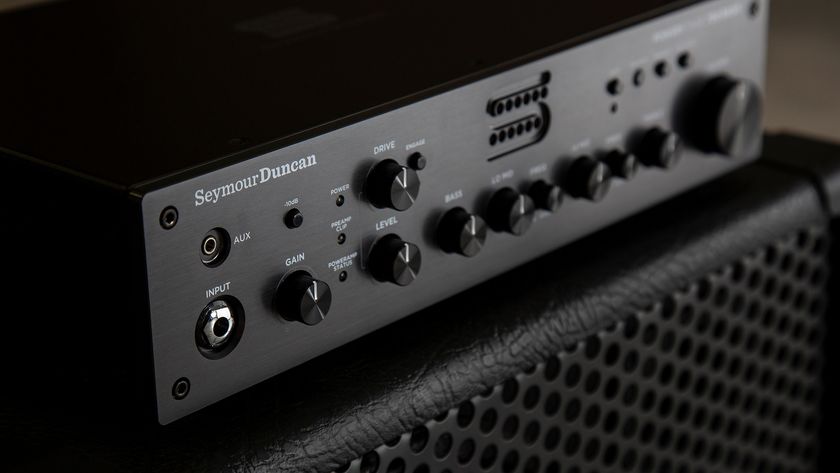Forbidden Axes!

This is an excerpt from the September 2014 issue of Guitar World. For the rest of this story, plus features on Dan Auerbach's off-beat guitars, Eric Clapton and his new J.J. Cale tribute album, Judas Priest, 17 Amazing practice amps, columns, tabs and reviews of new gear from Epiphone, ESP Guitars, Visual Sound, Blackstar, G&L Guitars, Ibanez and more, check out the August 2014 issue at the Guitar World Online Store.
From the late Fifties through the early Seventies, broke-ass musicians didn’t have to settle for boring guitars. In fact, many budget-guitar companies in the U.S., Asia and Europe came up with a plethora of outrageously unique and inventive designs guaranteed to help players stand out from the crowd. Most of these guitars were peddled in department stores and five-and-dimes, and what they lacked in quality materials and craftsmanship, they more than compensated for by providing unmistakable character and style. With their weird wiring circuits, abundance of buttons and switches, and under- or over-wound pickups that emphasized unusual frequencies, these guitars had sounds—and looks—all their own.
Over the decades, idiosyncratic players like Jimmy Reed, Muddy Waters, Hound Dog Taylor, David Lindley, Jon Spencer, Jack White and Dan Auerbach have favored these mutants. Not surprisingly, prices of a few of the examples below have soared as players have discovered their previously hidden charms, but many can still be found at pawn shops and garage sales for less than the cost of a boutique stomp box.
American Pickers
Coral Hornet: Like Silvertone, Coral was a secondary Danelectro brand, but Coral guitars were introduced in 1967, after Danelectro founder Nathan Daniel sold the company to MCA. Vincent Bell, best known for designing the Coral Sitar, also developed the Hornet and several other Coral models. Like previous Danelectro guitars, it featured lipstick-tube single-coil pickups (either two or three of them) and a simple rosewood bridge. However, with its tapered poplar body, chrome-plated control panel boasting four knobs and four switches, dramatically swirled “mother-of-toilet-seat” pearloid pickguard and optional vibrato tailpiece, it was much more upscale than previous Dan-o models. Pete Townshend briefly played a Hornet during the late Sixties.
Guild S-200 Thunderbird: Although Guild made many high-quality electric guitars, the company’s solidbodies were not particularly successful. Apparently, Guild introduced the Thunderbird in 1963 to compete with the Gibson Firebird as well as Fender’s popular Jaguar and Jazzmaster models, but players just didn’t take to its unorthodox body shape, which resembled a quadruple amputee attempting to dance the Frug. Its anemic, microphonic humbucking pickups didn’t help matters either. The Thunderbird is probably most famous for appearing in the hands of Muddy Waters on the inside cover of his Electric Mud album. Prices shot up when Dan Auerbach started playing one, but the more conservatively shaped Jet Star S-100 (featuring a built-in stand!) and S-50 models remain budget bargains.
Ovation Breadwinner: With its built-in active FET preamp and band-rejection (midrange-cut) filter switch, the Ovation Breadwinner was much more sophisticated than the average bizarre guitar. Intentionally designed to resemble a medieval battle-ax, the guitar had a unique body shape that was ergonomically designed for balance when standing and comfort when sitting, and it provided unrestricted access all the way to the 24th fret. The first version, produced starting in 1972, featured a pair of single-coil pickups, which were replaced by a pair of mini humbuckers from 1975 until Ovation discontinued the Breadwinner and similar Deacon model in 1982.
Get The Pick Newsletter
All the latest guitar news, interviews, lessons, reviews, deals and more, direct to your inbox!
Eurotrash
Eko Rokes VI: Whether this guitar resembles a rocket or a shovel is a matter of opinion, but the Eko Rokes VI was certainly one of the most original space-age guitar designs to come along, after the Flying V. The Italian Eko company designed the model for an English band called the Rokes, who found success, oddly enough, as an Italian pop group. A better-than-average instrument, the Rokes guitar featured one DeArmond single-coil bridge pickup and a Bigsby-style vibrato.
Hagstrom III: Sweden’s Hagstrom company originally made accordions, which may explain why its early electric guitar models had so many pushbuttons and switches. The Hagstrom III, also known as the Futurama, F-300 and Kent III (a Hagstrom export brand), was the Swede’s alternative to the Strat, featuring six confusing tone and pickup selector switches, three impressively hot single-coil pickups and one master volume control. Despite being a relatively cheap model, the Hagstrom III/Futurama has been seen in the hands of David Bowie, Andy Partridge of XTC and Neil Young.
This is an excerpt from the September 2014 issue of Guitar World. For the rest of this story, plus features on Dan Auerbach's off-beat guitars, Eric Clapton and his new J.J. Cale tribute album, 17 Amazing practice amps, columns, tabs and reviews of new gear from Epiphone, ESP Guitars, Visual Sound, Blackstar, G&L Guitars, Ibanez and more, check out the August 2014 issue at the Guitar World Online Store.
Chris is the co-author of Eruption - Conversations with Eddie Van Halen. He is a 40-year music industry veteran who started at Boardwalk Entertainment (Joan Jett, Night Ranger) and Roland US before becoming a guitar journalist in 1991. He has interviewed more than 600 artists, written more than 1,400 product reviews and contributed to Jeff Beck’s Beck 01: Hot Rods and Rock & Roll and Eric Clapton’s Six String Stories.
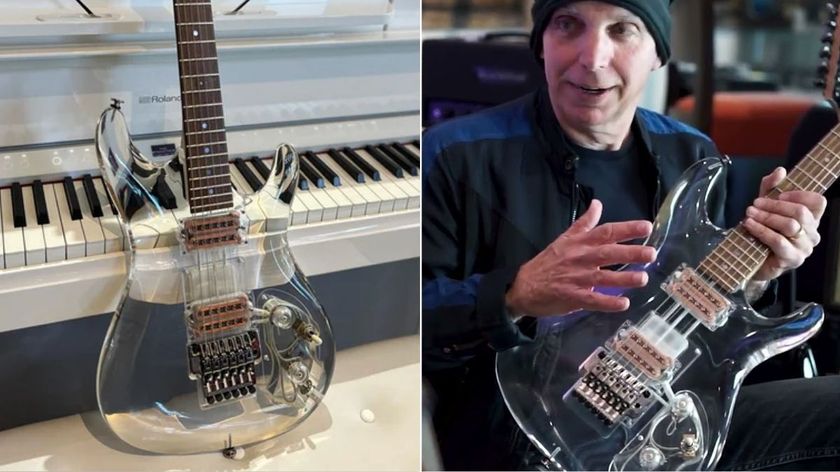
“When I saw it, I couldn’t believe how cool it was”: Joe Satriani is selling one of his rarest guitars – an ultra-ambitious Ibanez Y2K Crystal Planet prototype

“They’re basically Les Paul copies, let’s be frank. It’s a Les Paul-style guitar and I already have amazing Les Pauls”: Kirk Hammett owns over 100 guitars but none of them are PRS. He explains why

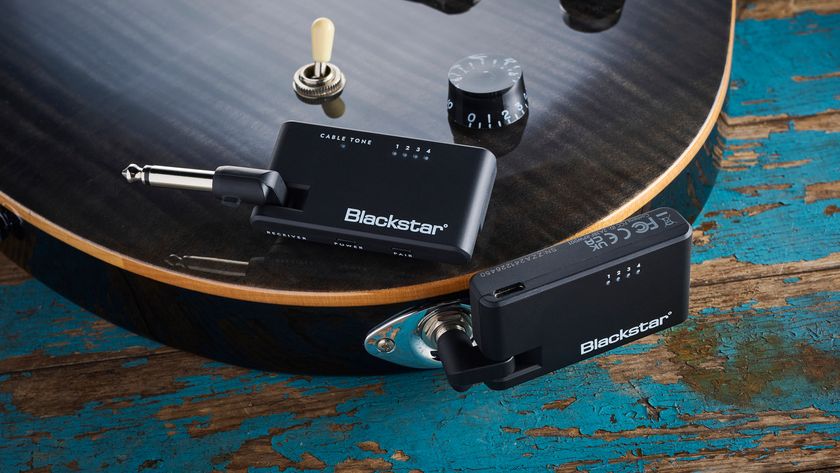

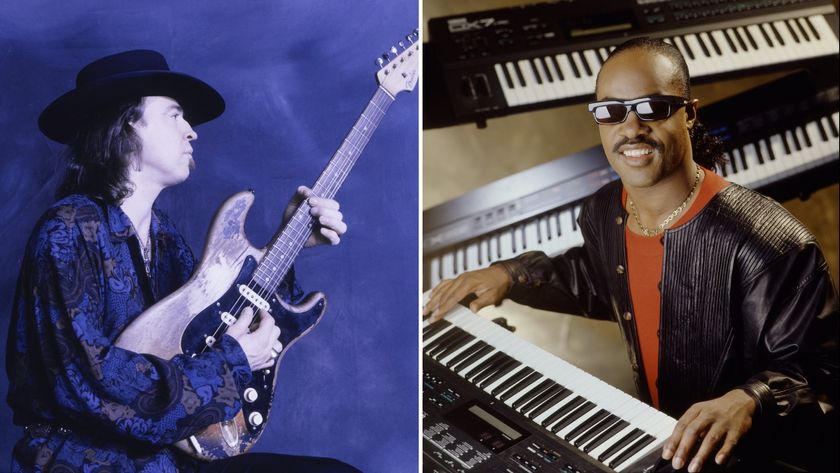
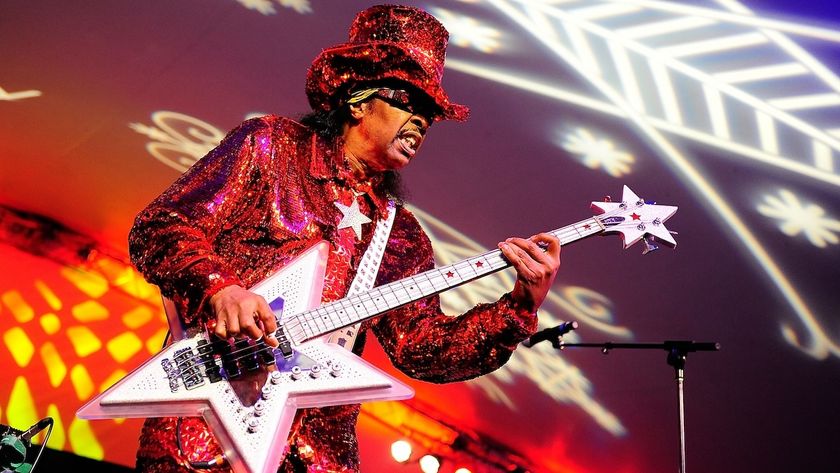


![[L-R] George Harrison, Aashish Khan and John Barham collaborate in the studio](https://cdn.mos.cms.futurecdn.net/VANJajEM56nLiJATg4P5Po-840-80.jpg)
